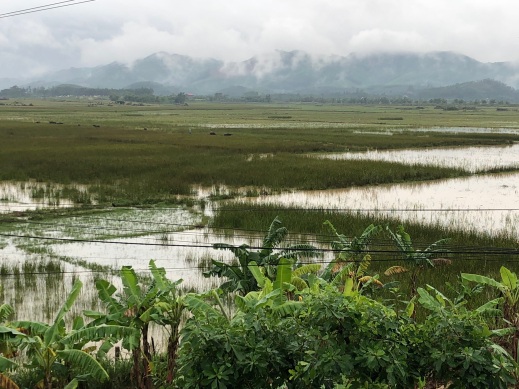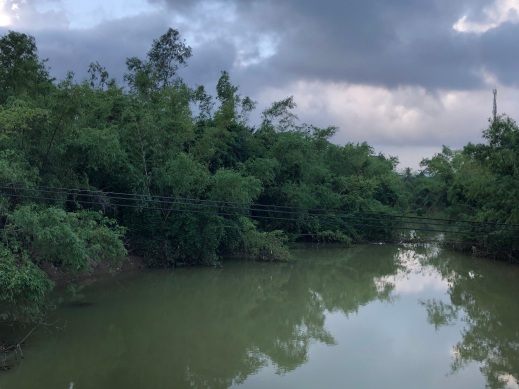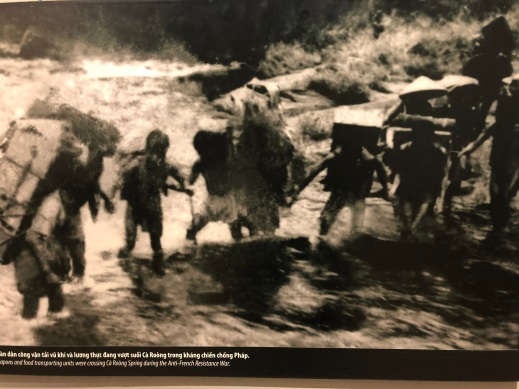Another visit to Cu Nam
After being cooped up in Hanoi city (mainly in an apartment during long weeks of lockdown), it was a joy to go back to Phong Nha Homestay in Cu Nam village, Quang Binh province. When I was last there in April, the rice harvest was in full swing. In October, the flat fields looked like sheets of grimy glass. The flood of a few weeks before, when the river overflowed over its banks, had receded but there was still much water around. In the eight days I was there, only the last two days were sunny. For the remainder of the time, there was lashing rain, drizzle, or mist. The wet didn’t spoil my enjoyment.
From my upstairs room, I watched the world around me. When the haze lifted, the distant hills emerged, and the river appeared as a silvery thread. Groups of buffalo strolled from their stalls onto the fields, where they plodded in the mud and grazed on grass and rice stubble. In the late afternoon, the animals ambled home, along with flocks of ducks that had spent the day foraging for worms and snails. The few people out in the wet shrouded themselves in the flimsy plastic rain capes and conical hats, both familiar features in Vietnam. When the rain stopped, children played football or rode bicycles through the mud and puddles.
I enjoyed a bike ride along the river. Bamboo thickets, planted to prevent enemy forces from both the French and American wars from landing, still line the banks. I crossed muddy fields on foot to photograph the remaining two pillars of the Cu Nam village temple destroyed during the French war. I watched groups of bomb disposal experts scour paddy fields with metal detectors. In the late afternoon, there were controlled explosions to destroy the bombs they had unearthed that day. The blast of a controlled explosion is an almost daily occurrence. The province of Quang Binh was heavily bombed, especially during the American War, because of the number of Vietnamese troops there and the area’s strategic importance.
My visit wasn’t only to escape the city. I had written a story based on events in the area during the 1946 – 54 First Indochina War (French War) and wanted local feedback on the content. To get background, V_____ had interviewed elderly residents of Cu Nam who had been children during the war. With her knowledge of both English and Vietnamese, Lan had translated the story, and we asked a former high school principal/author, and a local historian to read it. They were happy enough that there was nothing controversial or historically inaccurate. Lan, V____ and I visited the museum in Dong Hoi to find photographs to go with the story. We also went to the museum in Cu Nam. Sadly, during the destructive floods of 2020, the museum had been damaged, and most of the rescued items were removed while the building is being renovated.
Dong Hoi airport was closed for three months because of Covid restrictions and only opened the week before I travelled. I was the only non-Vietnamese on both flights. Most passengers were men. I had my certificates to show that I was double vaccinated, so I did not need a Covid test. A week of self-isolation at home after travelling is almost at an end.







Hello, Sue,
Glad to have you back on the page and obviously making the most of small flat confinement! Loved your story of the trip up to Cu Nam.
Keep at it.
love
S
Thank you Sandra. Hope all is well with you
Thank you Sandra. Hope all s well with you.